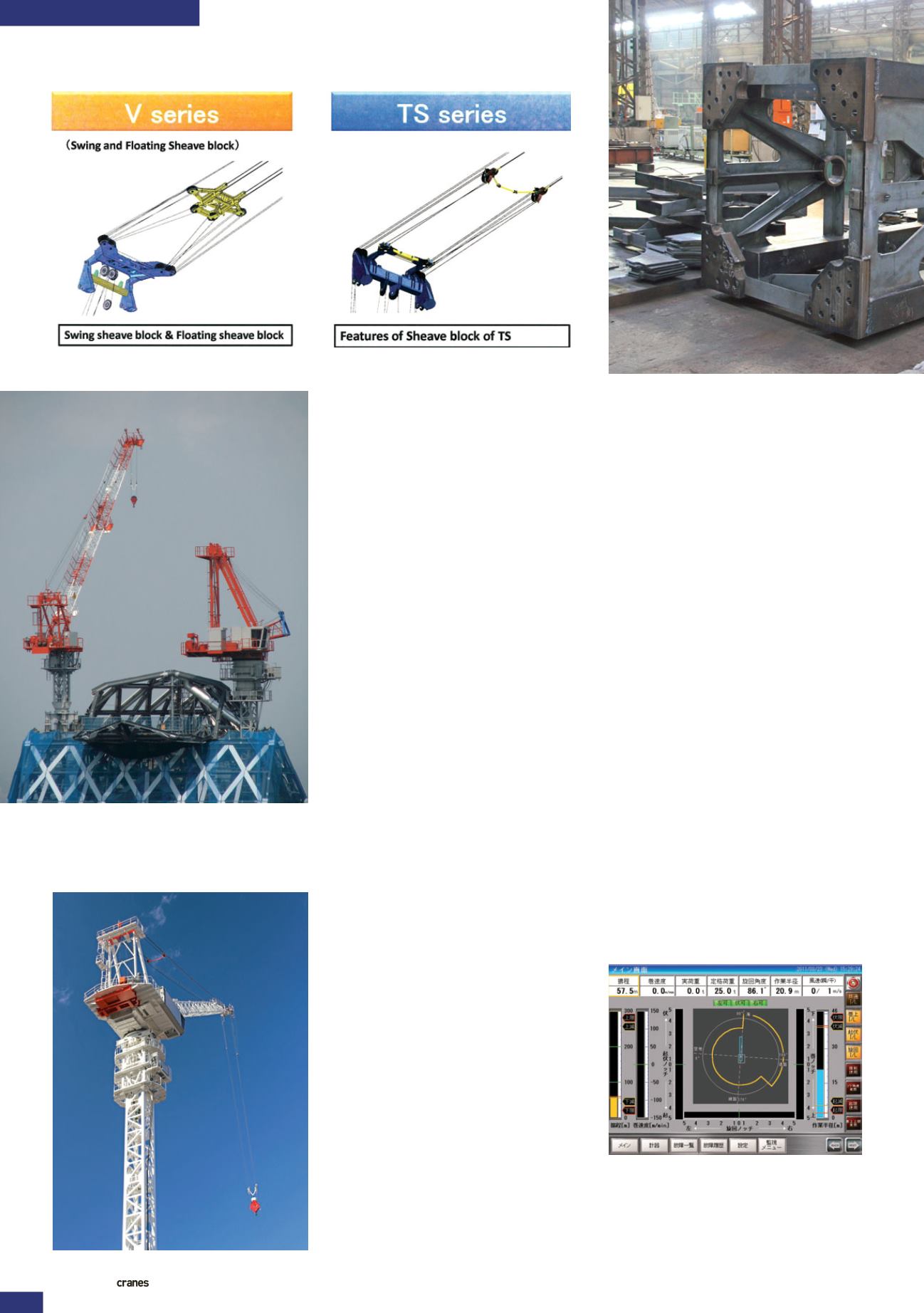
TOWER CRANES
INTERNATIONAL AND SPECIALIZED TRANSPORT
■
SEPTEMBER 2013
24
and with a tip load of 10.5 tonnes at 42 m
outreach. The main improvements on the
TS series JCC-TS500 include a simplified
floating sheave block design to allow simple
rope reeving and a 1.90 x 1.90 m mast
system, which allows the mast sections to
be climbed through the turntable.
Maximum free standing height has
also been extended to 51 m and a second
hydraulic pump will be used during the
climbing procedure to double the speed of
retracting the hydraulic ram when it is not
loaded.
The already short floor climbing time
of Japanese tower cranes is also reduced
further. On the TS-series the crane upper
will rest on outriggers while the whole
crane, including mast, will be jacked
through the climbing cage at the crane
base section to allow floor climbing in one
climbing process instead of two. The same
mast sections are used for internal and
external climbing as the ratio of external
and floor climbing application in Japan is
still 1:2.
The tail radius of the machinery deck
has also been reduced to 7.10 m to cope
with restricted construction sites.
A mechanical device for detecting the
sway angle of a suspended load is mounted
at the boom head to allow a sensor-based
In the new crane generation a one touch
panel centralises the monitoring of all crane
operating and maintenance information.
The screen shows details for the collision
avoidance system
The first JCC-TS500 fully
rigged to its maximum
free standing height on
the IHI test ground in
Yasuura, Japan
drives for all movements, a monitoring
system with touch sensitive display, and
an internet-based remote maintenance
function add to the versatility of the JCC-V
series cranes.
At work
In 2009 IHI supplied three JCC-V720AH
climbing cranes and one JCC-V600 for
the 634 m high Skytree Tower project in
Tokyo. The project pushed the borders of
crane design. The appendix AH stands
for Advanced and High Lift, indicating
the custom-designed extra features for
this spectacular ultra-high climbing crane
application in Japan. Offering a capacity of
32 tonnes at 22.5 m radius, a hook height of
420 m can be achieved at 30 m/min under
full load.
Where the cranes had to operate
at extreme height they were proved to
withstand 100 m/s wind speed with a
mast system 15 % more rigid than the
standard type. In addition, the cranes
had to be installed close to one another.
Booms had to be stored at a steep angle
in the out of service position. A patented
jib restriction device, made up of a second
luffing winch, held back the jib acting
against the main luffing winch. Using the
Slewing Assist Function (SAF) the cranes
were synchronised and moved by on board
computer systems in the out of service
condition to orientate all the jibs in the
same direction following changing wind
directions. A GPS-based three dimensional
collision-avoidance system was also used.
Getting better
To increase productivity, Japanese
construction companies are continuing
to make further improvements in crane
design. At the end of 2012, for example, IHI
announced the JCC-TS (Time Shortening
of Construction) series.
The first example of this new series of
climbing jib cranes, is the JCC-TS500 with
a capacity of 20 tonnes up to 26.5 m radius
Comparison of the floating sheave block of the JCC-V and the new JCC-TS series
The JCC-V60SK helping to dismantle a JCC-
V190SK disassembly crane. On the JCC-V190SK
the blue rigging frame is fitted at the boom foot
section to lower the A-frame by its own means


